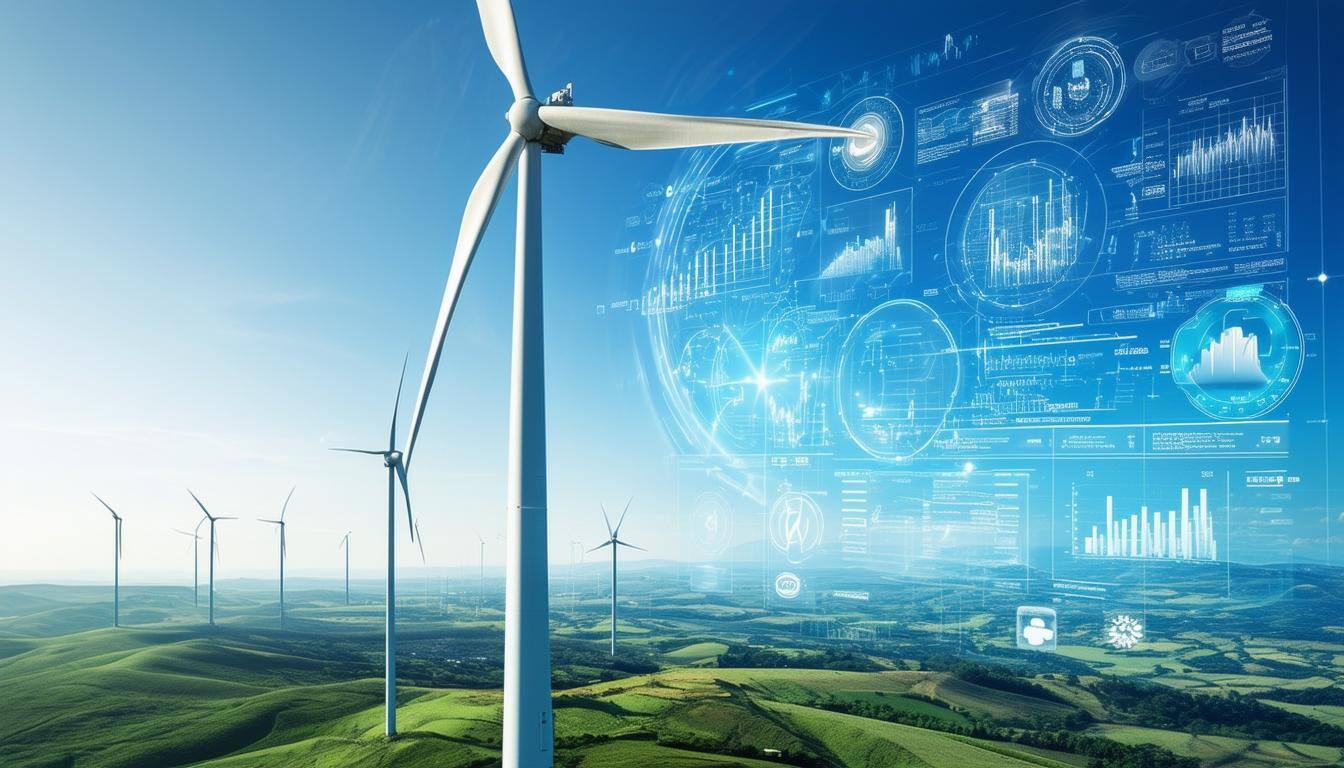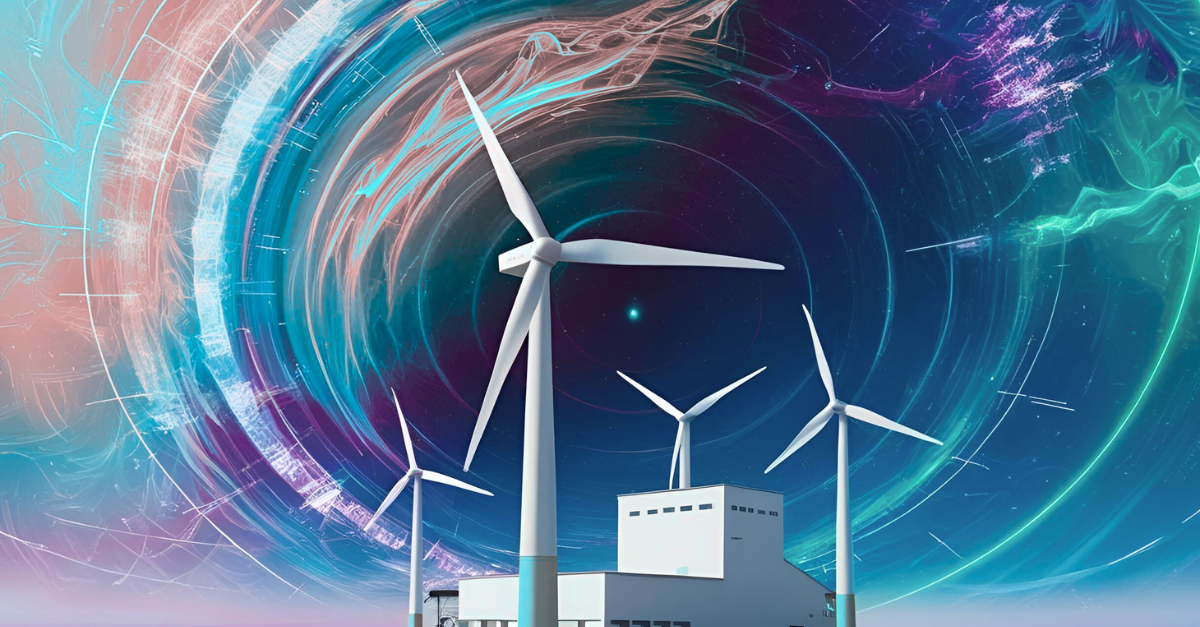Improving Wind Turbine Reliability with Advanced Electrical Monitoring
In the first part of our two-part series, we explore the critical gap in electrical system visibility and how advanced monitoring solutions are...
Wind turbine generators are sophisticated electromechanical systems with complex and often expensive failure modes. Repairs can cost between $50,000 and $200,000, with the price increasing dramatically depending on the severity of the issue. Accordingly, health monitoring is integral to maintain visibility into the condition and progression of wear within a turbine's generator. This continuous analysis enables early detection of issues and prevents costly failures. While electrical signature analysis provides key insights into the working state of generators, its ability to estimate the system's state of health is limited. As a result, relying on electrical data alone will likely lead to unreliable fault detections and a high rate of false positives. To enable the most comprehensive assessment, WindESCo's Electrical Condition Monitoring System (eCMS) captures both high-resolution electrical data, air gap magnetic flux data, and vibration data in real time. In this blog, we'll review the importance of vibration monitoring and critical signatures that could be detected using the vibration data.
As with any piece of rotating machinery, generators experience periodic motion that produces characteristic vibration patterns. These vibrations act like the heartbeat of the machine, offering a continuous, sensitive indicator of its condition. Even small irregularities or anomalies in this data can provide important clues into the operating state of the machine. On the mechanical side, vibration-informed analysis methods can identify early signs of issues such as bearing failure, rotor imbalance, looseness, and general structural degradation in the generator sub-assemblies. When combined with electrical analysis, vibration data contributes to a more comprehensive picture of electrical issues including winding failure, rotor bar damage, and missing magnetic wedges. By detecting these issues before they become catastrophic failures, significant cost-savings can be achieved through reducing repair costs, minimizing downtime, and maximize energy output.
sensitive indicator of its condition. Even small irregularities or anomalies in this data can provide important clues into the operating state of the machine. On the mechanical side, vibration-informed analysis methods can identify early signs of issues such as bearing failure, rotor imbalance, looseness, and general structural degradation in the generator sub-assemblies. When combined with electrical analysis, vibration data contributes to a more comprehensive picture of electrical issues including winding failure, rotor bar damage, and missing magnetic wedges. By detecting these issues before they become catastrophic failures, significant cost-savings can be achieved through reducing repair costs, minimizing downtime, and maximize energy output.
In order to build a complete picture of generator health, WindESCo installs multiple sensors on each turbine, with each sensor capturing a specific plane on the generator frame. We install multiple vibration sensors on the driven, non-driven end, and body of the generator. Sampling occurs at least every 30 minutes, during which each sensor records data for 20 seconds at least 50kHz. Sampling at >20kHz is integral because it captures the complete spectrum of vibration signatures associated with potential faults in the generator. For each turbine we monitor under the eCMS regiment, we collect nearly 90 million distinct datapoints every day - translating to about 1GB of data per turbine that's systematically processed, validated, and archived.
As a first step in the issue detection pipeline, collected vibration data is pre-processed and reviewed for quality in real-time. After validation, the frequency response from the collected vibration data is extracted. This response captures the frequencies at which the generator and its frame is vibrating, offering a detailed fingerprint of its mechanical health. When issues occur within the machine, the frequencies present in the resulting vibration data often exhibit distinct patterns and behaviors that are characteristic of specific failure modes. These diagnostic patterns are based on established mechanical principles showing that specific fault conditions - such as bearing defects or rotor imbalance - manifest as distinct frequency signatures. Therefore, by capturing and trending the magnitudes of these problematic frequencies, diagnosis and identification of issues within the generator is possible.

Building on this foundation, WindESCo combines traditional signal processing approaches with advanced AI algorithms. This synergy enables us to capitalize on the proven reliability of conventional methods, while also capturing the subtle nuances and complexities that AI is uniquely capable of detecting. Where traditional methods often rely on threshold-based checks or threshold-based checks or single-point measurements, AI algorithms can interpret complex, multivariate patterns within the vibration data. Instead of simply flagging an increase in vibration at a specific frequency, AI can assess how the entire signal evolves over time. This capability becomes especially important in variable speed generators, such as those in wind turbines, where the lack of a single rotational frequency causes fault-related spectral features to shift or blur. In this case, AI's capability to contextualize and recognize patterns across a wide frequency range is crucial for reliably identifying problematic behavior. By correlating data from vibration analysis, electrical signal monitoring, and magnetic flux sensors, AI reduces false positives and negatives. This enhances the accuracy and reliability of prescriptive analytics for wind turbine operations and maintenance.
Unlike many predictive maintenance solutions for turbine generators that rely on one-time assessments or periodic checks, WindESCo provides continuous, real-time monitoring. Ensemble approach of vibration analysis in correlation with electrical signature analysis provides comprehensive insights about generator health. This ongoing visibility of operating conditions enables early detection of emerging issues, accurate trend analysis, and increased measurement accuracy. Critically, this means that we're able to detect issues sooner and with more confidence than the competition.
Additionally, WindESCo's partnership with ABB means that our vibration analysis algorithms are rooted in ABB's decades of experience with high-power electrical equipment. The combination of this domain expertise with WindESCo's cutting-edge AI capabilities means that the eCMS platform delivers industry-leading diagnostic precision and reliability.
Lastly, WindESCo is committed to always validating and reviewing potential issues before they're communicated to customers. If an issue is identified through our vibration analysis, it is carefully assessed by out engineering team, who not only confirms the finding but also provides clear, actionable next steps - ensuring that customers receive practical guidance to support timely and effective maintenance decisions.

Wind turbines are complex systems where failures in electrical components - such as generators, power converters, power electronics, drives and...
![[Webinar On Demand] Wind Turbine Converter eCMS: Minimize Unscheduled Maintenance Expense, Downtime and Risk of Thermal Events](https://www.windesco.com/hubfs/4.png)
On Wednesday, December 4, 2024 at 10:00 A.M. EST, WindESCo hosted a webinar for wind industry owners, operators, asset managers and other...
